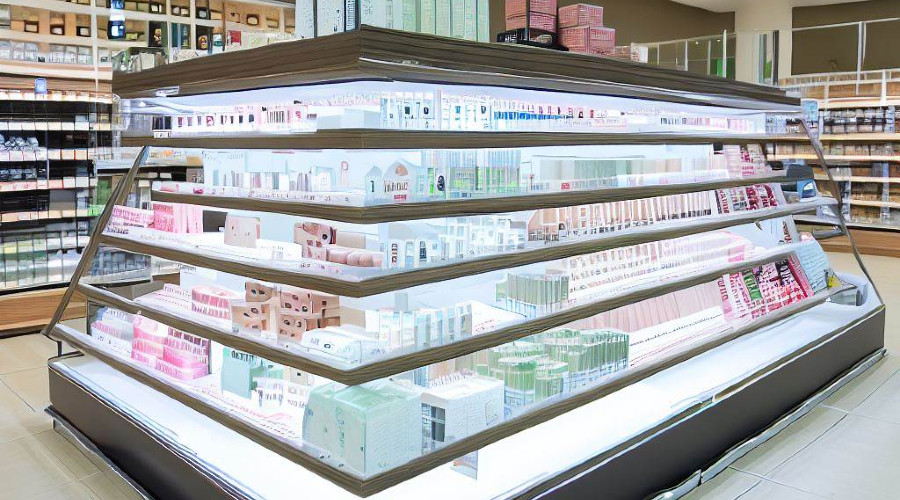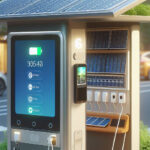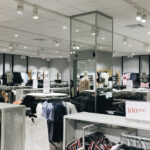Greetings, DisplayHype.com aficionados! Mastering your store layout can be a game-changer in merchandising, brand awareness, and advertising. Specifically, understanding the intricacies of gondola display stands configuration can transform your store from a simple shopping venue into a highly optimized sales-driving machine.
Let’s explore the strategies and nuances that can elevate your gondola displays and supercharge your sales.
The potential of end caps
End caps serve as the retail equivalent of a billboard on a busy highway. These spots are at the end of gondola aisles and are prime real estate for showcasing products. Well-designed end caps can attract customer attention, drive spontaneous buying decisions, and greatly boost sales.
End caps should be strategically utilized to showcase your high-margin items, best sellers, or new arrivals. The idea is to grab attention and incite interest immediately.
The most effective end caps are dynamic and regularly updated based on:
- seasons
- promotions
- weekly customer behavior analytics.
For instance, supermarkets often transform end caps into thematic showcases. Such as displaying BBQ essentials during the summer months or cookie-making ingredients around the holidays.
Effective shelf arrangement
Vertical space within gondola display stands is more than just an area to fill with products. The arrangement of each shelf and the specific placement of products on those shelves can substantially influence customer perception and purchasing behavior.
The conventional wisdom of “eye level is buy-level” still holds. Place your most profitable or critical items at the customer’s eye level to maximize visibility and sales. But the equation continues beyond there. Accessibility is crucial for lower shelves, making them ideal for bulk or heavy items. While the higher shelves can be reserved for less frequently purchased or specialized products. For example, children’s favorite toys might be placed at their eye level in a toy store. Meanwhile adult-oriented board games and hobby kits could be found on higher shelves. Furthermore, you can learn how to optimize supermarket layout.
Understanding product grouping

The art of product grouping dives into the subtle psychology of how customers perceive and relate to products displayed near each other. The purposeful grouping of items can significantly impact the sales of individual products and the likelihood of cross-selling and upselling.
Naturally, complementary products should be placed near each other to encourage combined purchases. Moreover, understanding the customer’s journey through the store allows for a hierarchical arrangement of products. Essentials can be positioned at the beginning of the aisle, gradually leading up to impulse buys or luxury items towards the end. In a grocery setting, you might find that pasta is conveniently placed next to pasta sauce near Parmesan cheese, inviting customers to purchase all three.
Understanding product grouping is more nuanced than just placing complementary items beside each other. Let’s delve deeper into various techniques that can guide your product placement strategy, enhancing both the customer experience and your sales metrics.
Zone design
This technique involves dividing the gondola or retail space into specific ‘zones’. Each features a category or type of product. For example, in a health and beauty store, you might have a zone exclusively for skincare, another for makeup, and so on. It helps guide customers through the store. It makes their shopping journey more intuitive.
Block merchandising
This strategy groups products in ‘blocks’ on the gondola shelves. Similar products or brands are clustered together, giving the shopper a quick, at-a-glance comparison. It is beneficial for books, canned goods, or beauty products, where customers might want to review several similar items before choosing.
Vertical merchandising
Products are grouped vertically on a shelf instead of horizontally. It catches the customer’s eye as they look up and down, scanning various available products. It’s also an effective technique for directing focus to higher-margin products.
Pyramid display
It involves building a pyramid shape with products. The bulkier or foundation items are at the bottom and the more expensive or exclusive items are at the top. This visually appealing setup encourages customers to look at the entire range of products. Thereby increasing the likelihood of upselling.
Market basket analysis
This data-driven technique analyzes point-of-sale data to understand which items people frequently buy together. You can place such products close to each other to encourage additional sales. For example, if you find that people who purchase grilling meat also tend to buy charcoal, arranging these two products near each other makes sense.
Storytelling
This approach aims to create a narrative around the products. By carefully arranging items, you can guide the customer through a ‘story’ that ends with them making a purchase. For instance, placing hiking boots, socks, and trail mix together could tell the ‘story’ of an outdoor adventure.
Lifestyle merchandising
This method involves grouping products based on lifestyle choices or consumer habits. For example, in a grocery store, an organic foods section might include everything from organic vegetables to snacks and cleaning supplies, appealing to consumers who prefer organic products.
Cross-merchandising
It involves the strategic placement of products from different categories that are commonly used together. Think of placing wine glasses beside the wine section or grilling utensils beside the barbeque sauce and grills.
Understanding and implementing these product grouping techniques can go a long way in optimizing your gondola display. Each strategy has unique benefits and can be most effective in a well-planned layout. These techniques serve to not only enhance the aesthetic appeal of your store but also to facilitate the customer journey, ultimately leading to increased sales and improved customer satisfaction.
Technology and gondola displays
Incorporating technology into gondola displays adds a contemporary touch that can enrich the customer experience. Technology can provide dynamic flexibility and a wealth of information on the shelf, from digital price tags to interactive elements.
Digital price tags, for example, are convenient for real-time price updates and can display additional product information at a glance. Likewise, incorporating QR codes or interactive touch-screen panels on the gondola can engage customers by offering more detailed product specs, reviews, or tutorials. Cosmetic retail giant Sephora, for instance, integrates digital screens into its gondola display stands to provide customer reviews and video tutorials on makeup application.
Conclusion
The configuration of your gondola display stands should never be left to chance. It’s an intricate art form that demands a well-thought-out strategy backed by customer psychology, empirical data, and a comprehensive understanding of your merchandise. By optimizing end caps, maximizing vertical space, employing smart product groupings, and integrating technology, you can dramatically influence both sales and customer satisfaction.



